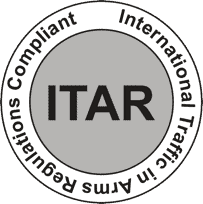Comprised of one part silicon and two parts oxygen, quartz is one of the most abundant minerals found in Earth’s crust, and its unique properties make it a popular choice for many applications. Aside from its abundance, quartz is highly resistant to wear, including wear induced by chemical or physical weathering. Quartz is commonly used to create clocks and timepieces due to its ability to vibrate at precise frequencies.
Because of quartz’s hardness, it can present challenges in the quartz machining process if not equipped with the proper machinery. At Quartzite Processing, we use diamond tooling to machine/grind hard and highly durable materials — perfect for handling quartz workpieces.
Grinding Methods and Processes
We use various methods to machine and grind quartz according to your specifications for size, finishing, and shape needs. These include:
Surface Grinding
Surface grinding is a finishing process using a rotating abrasive wheel to smooth flat surfaces. The goal of surface grinding is to make the parts flat, smooth, and precise. Surface grinding can help achieve different degrees of smoothness, depending on the material and the grinding wheel’s abrasiveness.
ID Grinding
Insider Diameter (ID) grinding removes material from the inside of a cylindrical/conical workpiece. At Quartzite, we can accommodate ID grinding on parts with dimensions between 0.030″ to 12″.
A collet holds the object and rotates it in place. The object and grinding wheel rotate in opposite directions, allowing reverse direction contact of the surfaces on which the grinding takes place.
OD Grinding
Outside Diameter (OD) grinding removes materials from the outside of a cylindrical workpiece. Our dimension range for OD grinding is 0.025″ to 14″.
OD grinding does more than shape a part’s exterior diameter. OD grinding requires the workpiece to have a central axis of rotation. Unlike other quartz grinding methods, OD grinding happens on the outside surface of a workpiece between the centers.
Centerless Grinding
Centerless grinding is a precision grinding process involving the placement of a workpiece between two wheels. It is divided into three categories, including:
- Through-feed. The regulating wheel pulls in the material, meaning you won’t require extra feeding mechanisms. Through-feed is ideal for cylindrical parts.
- End-feed. The workpiece is fed via the grinder until it reaches the end and then reverses. End-feed is perfect for tapered parts.
- In-feed. In-feed is a manual process perfect for hourglass and other unconventional shapes. An operator feeds the workpiece through the grinder by hand and closely observes and adjusts the piece to create the desired curvatures.
The two grinding wheels rotate in the same direction at varying speeds. The fixed-axis grinding wheel rotates, allowing for the downward direction of the force applied to the workpiece. The other wheel applies lateral pressure to the workpiece. It has either a rubber-bonded or rough abrasive to secure workpieces.
Ultrasonic Drilling
Also known as ultrasonic machining, ultrasonic drilling uses abrasive particles and ultrasonic vibration to wear away materials to create holes and different shapes in the material. Ultrasonic drilling doesn’t use chemicals or heat, protecting materials from excess stress and allowing for a stronger and more durable product.
A drill bit fits on a powerful ultrasonic generator and is used to make the holes. Water cooled diamond core drills are used to make a thin, fluidic paste that flows between the drill bit and the surface where the hole needs to be drilled.
An ultrasonic generator makes the tool bit vibrate rapidly. Ultrasonic drilling is a cost-effective operation and does not require additional finishing processes.
Quartz Application
Some of the common quartz applications include:
- Watches and clocks. Quartz crystals maintain an accurate frequency standard regulating watch/clock movement.
- Electronics. Quartz is broadly used within electronics, where quartz is used as high-performance resonators for use in oscillators and filters.
- Glassmaking. Glass is manufactured from silica oxide, a hueless crystalline compound found as quartz, flint, or sand. In machining quartz glass, the 99.9% exceptionally pure silica oxide is melted and cooled to the desired shape.
- Jewelry and gemstones. Quartz has a broad color range, making it ideal for jewelry. It is also readily available and highly durable.
- Ceramic industry. Quartz is used in the ceramic industry to minimize shrinkage in firing and drying. Quartz ceramic machining is also used to impart rigidity to the body.
The Quartzite Processing Advantage
We are highly experienced and equipped to handle quartz machining of any magnitude. We have a wide inventory and can turn your project around in as little as a week due to our specialty in Ship-to-Stock and Just-in-Time delivery. In addition, we are fully ISO 9001:2015 and ITAR certified, showing our dedication to ensuring your satisfaction and the highest quality standards. Contact us to learn more about our quartz machining services or request a quote.


